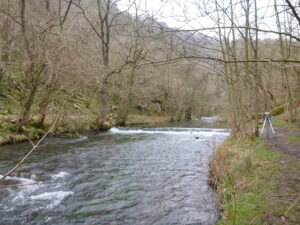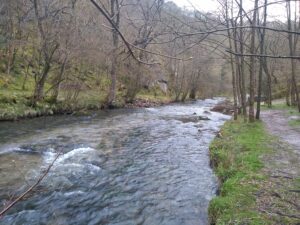The Spring 2023 issue of Conservation Land Management (CLM) is now out, the first of volume 21, which marks CLM’s 20th year in existence. This issue features an exciting addition to CLM, a brand new Habitat Management for Invertebrates series, beginning with two articles. The remaining articles in this issue cover a range of subjects, including ghost pond restoration and the removal of weirs and dams to improve river habitats – read a summary of the articles below.
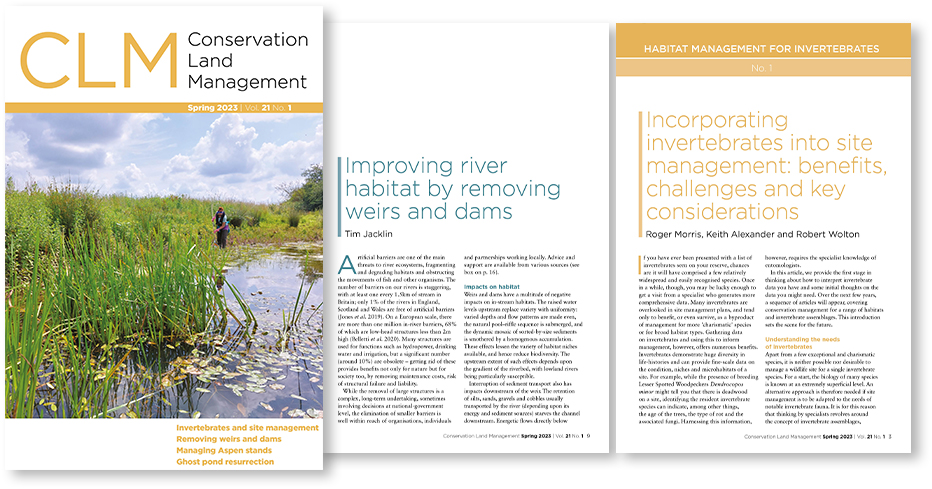 The new Habitat Management for Invertebrates series aims to encourage those who are involved in making management decisions on a site to consider invertebrates. In the series’ first article, Roger Morris, Keith Alexander and Robert Wolton highlight the key factors that site managers need to think about when incorporating invertebrates into management plans, discussing the types of data that are most useful and how to interpret these data.
The new Habitat Management for Invertebrates series aims to encourage those who are involved in making management decisions on a site to consider invertebrates. In the series’ first article, Roger Morris, Keith Alexander and Robert Wolton highlight the key factors that site managers need to think about when incorporating invertebrates into management plans, discussing the types of data that are most useful and how to interpret these data.
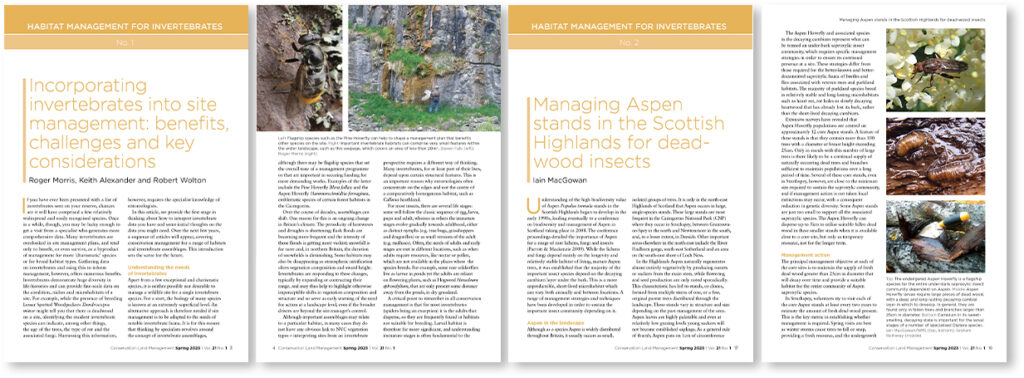
The next article in the series goes on to focus specifically on the management of Aspen forests in the Scottish Highlands. There are around 15 rare or notable species of fly that are associated with the decaying cambium layer under the bark of dead Aspen, the Aspen Hoverfly Hammerschmidtia ferruginea being one of these. The Aspen Hoverfly is considered a flagship species – the correct management for the Aspen Hoverfly benefits several other key species. The priority in management is to make sure that there is a fresh supply of dead wood, and Iain MacGowan describes how this achieved in a way that provides optimal conditions for Aspen Hoverfly larvae, by either moving snapped branches with a diameter over 25cm closer to ground or by bringing in dead wood from adjacent sites. Look out for more articles in the Habitat Management for Invertebrates series in future issues of CLM.
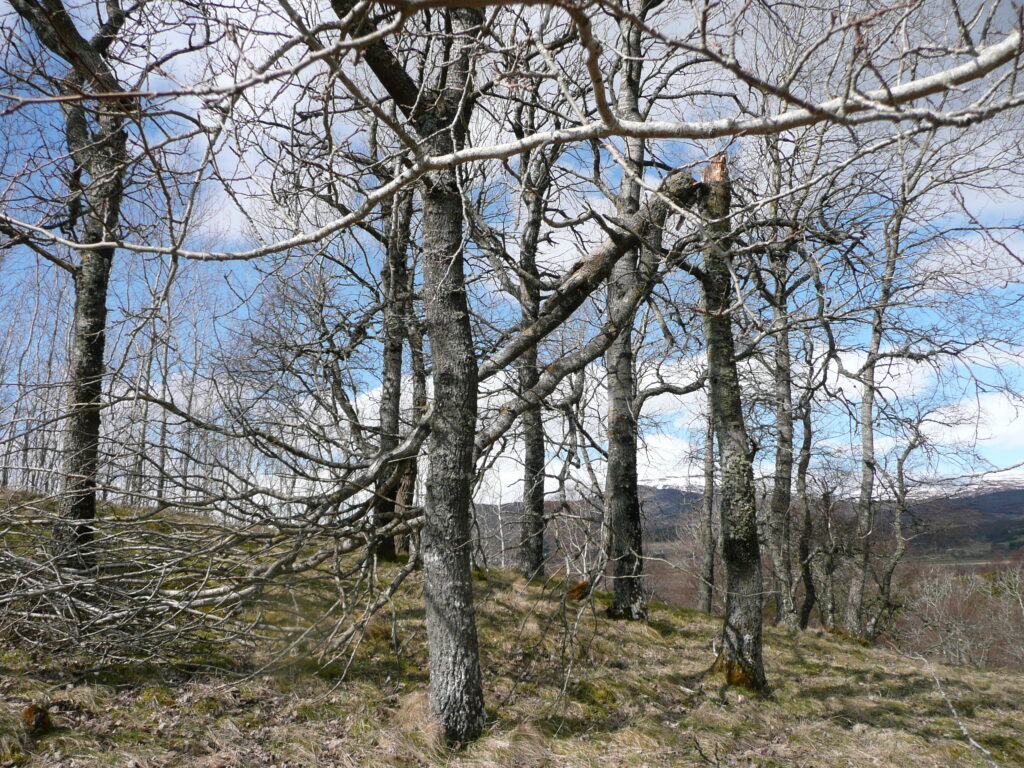
Only 1% of the rivers in England, Wales and Scotland are free from artificial barriers, which pose a major threat to river wildlife. They lead to habitat fragmentation, interrupt the flow of sediment and obstruct the movement of fish and other organisms. Although some of these barriers have their uses, such as for hydropower, drinking water and irrigation, many are now obsolete. Tim Jacklin outlines the benefits to river habitats of removing these barriers and illustrates possible approaches by describing several different weir removal projects in the UK.
With the move to more intensive farming during the last century, many farmland ponds, which were once dotted across much of the British countryside, were filled in. But not all is lost. These former ponds, known as ‘ghost ponds’, can be resurrected; the seeds of wetland plants and stonewort oospores are still viable and, once a pond is restored, wetland plant communities are quick to recolonise. Carl Sayer et al. describe how to locate ghost ponds, the methods used for excavation, and the management of ponds post restoration.
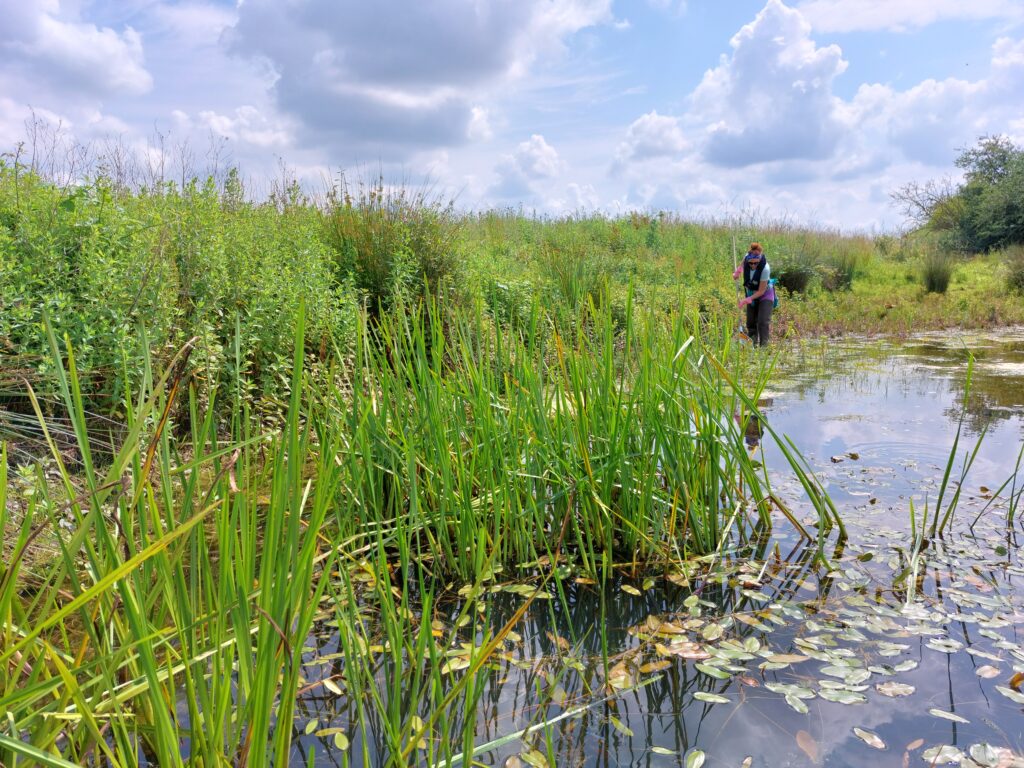
Soils play a key role in a number of ecosystem services, such as carbon sequestration, water management and nutrient cycling, and although they were once largely ignored, there is an emerging understanding of the importance of improving the health of soil, particularly in an agricultural context. With a focus on soils on farms, Becky Willson, from the Farm Carbon Toolkit, discusses what soil health is and why it is important, and the key characteristics of good-quality soil.

In this and every issue you can expect to see Briefing, keeping you up to date with the latest training courses, events and publications, and On the ground which provides helpful tips or updates on products relevant to land management. Other features, such as Review, which can include letters from readers or updates from our authors, also regularly appear in CLM.
CLM is published four times a year, in March, June, September and December, and is available by subscription only, delivered straight to your door. Subscriptions start from £22 per year. If you would like to read any of these articles, back issues are also available to purchase individually (subject to availability).
If you are involved in a conservation project and think your experiences could be useful to other practitioners, we would love to hear from you. Feel free to contact us if you are interested in writing for CLM – we will be happy to discuss your ideas with you.







